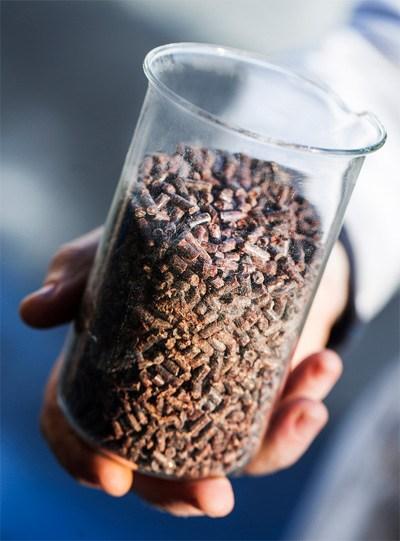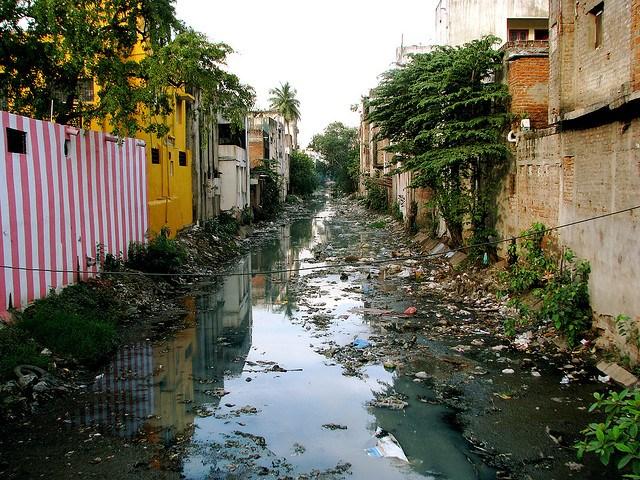The Key to Marketing Sustainability: Make It Sexy


By Sandra Stewart
Sexy sustainability. You always put those two words together, right?
Stop laughing. Sustainability is a lot of things, but for most of us, sexy isn’t one of them. That needs to change.
Polls consistently find that people want products and services to have sustainable attributes, and they plan to buy them. Just as consistently, actual purchases don’t match up with stated intentions. There are plenty of reasons for this disconnect, ranging from how much people know to how much people care. But marketing is surely part of the problem, and it may be the easiest part to address.
Marketers typically present sustainability in do-the-right-thing terms, as an afterthought or not at all (figuring, it’s not a motivator, so let’s not talk about it). Those approaches aren’t doing the job: If decades of id-targeted advertising have taught us anything, it’s that virtue doesn’t sell. And if we don’t talk about sustainability, we can’t get people to buy into it — unconscious sustainable purchases are not going to accelerate the shift to a new economy.
We need to make sustainability sexy. Not underwear-model sexy, but magnetically attractive. At Thinkshift, we’ve been working on cracking the code for sexy sustainability marketing — the DNA of an “I want that” or “I want to do that” reaction. We’re calling it (provisionally) the HELIX code: Humor, Emotion (or Empathy), Looks, Intelligence and the X factor. Marketing that’s sexy has at least one of these elements, and usually more.
Humor: The most viral quality
Humor can make even the most mundane products and services desirable — and it’s the rocket fuel powering most viral successes. There’s a reason “sense of humor” appears in every personal-ad writer’s list of must-haves (acing out even long walks on the beach). Research on humor in advertising shows that funny ads are more memorable and likable (though — key point — it has to be related to the ad’s core message to drive behavior). Neuroscientists have found that humor activates the brain’s reward system.
So — humor is good. And we’re not just talking about jokes. Whimsy counts, too, along with wryness, silliness and general playfulness (think: “Solar Freakin’ Roadways” or Chipotle’s "Farmed and Dangerous”). Humor in marketing is tricky. But if you really know your audience, you can find a way to amuse them that will grab their attention and open them up to your message.
Emotion: The key to our hearts
In short, susty marketing needs to hit people in the id. Anything worth having solves problems or satisfies desires, and the best do both. But sustainability marketing often focuses on solving the world’s problems when it needs to focus on solving peoples’ problems in a way that hooks into emotion and shows empathy. (Can we make “save the planet” go away, please?) Science backs this: Brain imaging research shows that people rely most on emotions — feelings and experiences — when evaluating brands.
There are plenty of ways tap into emotions, including storytelling, demonstrating empathy for your audience’s problems, and appealing to people’s aspiration and self-image. Just do it.
Looks: They really do count
As the likes of Target, Ikea, Apple and others prove, good design sells — to a broad market and at any price range. Some sustainable brands clearly know this — Method and Warby Parker are top examples — but many brands seem stuck in a DIY aesthetic that that they think says “authentic” but really says “cheap, crunchy, not cool.”
Looks do matter, from beginning to end — not just in product design, but also in every graphic expression of the company’s identity. For growth companies, this is not a place to cut corners. It can’t be lipstick on a pig, either — susty products often have superior functionality, and they should show it off. A good example: Plum Organics baby food pouches are less resource-intensive than glass jars, but their light, bright, no-spill and self-feeding qualities are what make them irresistible to busy parents.
Intelligence: The hottest quality
Intelligence is the one absolutely essential quality of sexy susty-ness — for the simple reason that, without it, whatever you’re selling is not sustainable. Truly sustainable products, services and behaviors are just flat-out better, smarter and often more technically advanced than conventional options. It’s nuts not to highlight this in marketing, but many companies don’t do it effectively. They worry that the intelligence factor is too complicated to explain, or, conversely, they make it too complicated and people just don’t get it.
There’s always a way to get to the core of genius. Marketers should work at this for as long as it takes. You’ll know you’ve succeeded when people instantly see what’s smart about your offering — and feel smart for wanting it.
The X-Factor: That je ne sais quoi
The X factor is the functional opposite of intelligence — it’s not essential, but it can override every unsexy thing about what you’re pitching. Who hasn’t fallen in love with something and been unable to explain why? That’s the X factor — the utterly compelling thing you can’t pin down.
If we can’t define it, how can we pursue it? One way is to draw on symbols and schema that already have the X factor because of the cultural associations they carry. Another is to overturn expectations. Case in point: When the iPhone was introduced, we didn’t think we needed to carry a computer in our pocket — but we wanted it. This isn’t just about newness (plenty of new things fail), but about a mysterious sense of wonder.
Image credit: Pixabay
Sandra Stewart is a principal of San Francisco–based Thinkshift Communications, a Certified B Corp and California public benefit corporation that helps sustainable businesses and cleantech companies boost brand value through compelling brand stories and thought leadership positioning. Follow her @thinkshift and connect on LinkedIn.
Amazon to Power Data Centers With Renewable Energy


For years, Amazon has received criticism of its environmental policies. In 2012, an article published in the Guardian pointed out that Amazon hadn’t published a sustainability report. Try looking for one on Amazon’s website, and you still can’t find it. However, last summer Amazon hired Kara Hartnett Hurst, CEO of the Sustainability Consortium, as its first sustainability executive. And this month, the company made a big announcement concerning renewable energy.
Amazon Web Services is planning to buy the energy generated by a 150 megawatt wind farm in Benton County, Indiana, the company announced last week. The wind farm, called the Amazon Web Services Wind Farm (Fowler Ridge), is expected to start generating power by January 2016. It will generate enough electricity, 500,000 megawatt hours, to power about 46,000 homes a year, and will be used to run both current and future AWS Cloud data centers.
Over a million customers use AWS services, including startups, large enterprises and government agencies in 190 countries. Back in November, AWS shared its target to use 100 percent renewable energy for the global AWS infrastructure footprint. The 13-year power purchase agreement (PPA) for the wind farm will help the company meet its goal.
The wind farm, with a planned site totaling 50,000 acres, will be built by Pattern Energy Group. Pattern Energy has 12 wind projects in its portfolio that total 1.6 gigawatts, but this is its first wind project in Indiana.
“Amazon Web Services Wind Farm (Fowler Ridge) will bring a new source of clean energy to the electric grid where we currently operate a large number of data centers and have ongoing expansion plans to support our growing customer base,” said Jerry Hunter, vice president of infrastructure at Amazon Web Services, in a statement.“This PPA helps to increase the renewable energy used to power our infrastructure in the U.S. and is one of many sustainability activities and renewable energy projects for powering our data centers that we currently have in the works.”
From sustainable packaging to sustainable buildings
Amazon’s website details its environmental measures. One of those measures is Frustration-Free Packaging, which is 100 recyclable and allows products to be shipped in their own packages without extra shipping boxes. It eliminates hard plastic cases and plastic-coated wire ties, which are commonly used in toy packaging. Amazon also ships orders to customers in corrugated containers that contain 43 percent recovered fiber content on average. They are also 100 percent recyclable.
Amazon also incorporated sustainability into its corporate headquarters in Seattle. The buildings that make up the headquarters contain salvaged and locally-sourced woods, energy efficient lighting, and composting and recycling alternatives. Six of the buildings have achieved LEED Gold certification. Amazon.de’s corporate offices in Munich, Germany, have also achieved LEED Gold certification. Four of Amazon’s fulfillment centers in Indiana, Pennsylvania and Arizona have also achieved LEED certification.
Image credit: Vibha Bamba
A New Vocabulary for Responsible Business: Words That Encourage


By Mark Brownlie
Are you tired of re-conceptualizing the paradigm to optimize competencies? Sometimes the words we use at work do more to baffle than to communicate clearly.
In reality, we speak many languages in our companies — legalese, engineering 301, advanced human resources, fluent finance — all sorts of corporate-speak.
If we keep using language that doesn’t communicate well, or worse, that gives the wrong impression, we’ll continue to have problems in becoming better businesses and a better society. I’m not proposing that we adopt a new language, but we do need to infuse our current lingo with some words and concepts that encourage a better future.
| Lets speak less about this… | And more about this... |
| Sustainability | Thriving |
| Manage risk | Capitalize on opportunity |
| Growth | Development |
| Shareholder value | Shared value |
| Reductions | Contributions |
| Stakeholder management | Stakeholder engagement |
From "sustain" to "thrive"
Many leading companies are pursuing sustainability -- in a sense, respecting the needs of future generations. But taken at face value, what does that word communicate? When you sustain something, you’re just keeping it going. It speaks nothing to the quality of that thing. Instead of sustainability, companies should strive to thrive -- moving from hanging on to flourishing.
From "growth" to "development"
One of the primary stated objectives of most businesses and governments is growth. If someone really thinks that growth is sustainable in the long run, they haven’t heard the story about lynx and hare populations. Bigger isn’t always better. A company can grow so big that it limits its agility. Development connotes improvement, not necessarily size. If we were to replace economic or community growth with economic or community development, then we might see fewer objections from NGOs and more collaboration.
From "shareholder" to "shared" value
What drives that desire for growth are the handcuffs of needing to create shareholder value. Shareholders might provide the financial wherewithal to operate, but other stakeholders provide the human, social, built and natural capital to succeed. In recognition of the role that employees, communities, governments and others have in helping to create corporate value, we need to start transforming shareholder value into shared value.
From "risk" to "opportunity"
In response to the question of why a company is taking on a specific project, one of the typical answers is to manage or mitigate risk. The more we talk about capitalizing on opportunity instead, the more we look at achieving rather than avoiding. Risk committees and departments might better serve companies by adding opportunity to their names, and to their mandates.
From "reductions" to "contributions," from "management" to "engagement"
In sustainability reports we often read about how companies are minimizing their environmental impacts by reducing pollution or water use. What we don’t hear enough about are the positive long-term contributions they make. In those same sustainability reports we sometimes read about stakeholder management. Most stakeholders would rather be engaged than managed. Or we read about the employee turnover rate. Wouldn’t a retention rate more positively communicate the same data?
--
A new vocabulary for responsible business is not just about semantics or trying to put a spin on things. Words can encourage or discourage. Words matter.
What phrases or jargon would you like to see replaced with words that encourage?
Image credit: Gavin Llewellyn
Mark Brownlie is Chief Executive of Responsibility Matters Inc., a Calgary-based advisory firm helping companies and non-profits with sustainability strategies and communications.
Poor countries fight back against toxic pollution


Some developing nations are making real progress in the battle against toxic pollution which kills nearly 9m people every year.
A new report from the Blacksmith Institute For A Pure Earth, Global Alliance on Health and Pollution and Green Cross Switzerland, entitled Top Ten Countries Turning the Corner on Toxic Pollution , details 10 successful cleanup projects that are saving lives, improving community health and restoring the environment.
“Regardless of the obstacles and lack of resources, something can always be done to begin to turn the corner and improve the most polluted environments,” says Richard Fuller, president of Blacksmith Institute for a Pure Earth. “Each one of these projects provides on-the-ground proof of how truly solvable toxic pollution problems are, and these Top Ten Countries are leading the way.”
The countries highlighted are: Ghana, Senegal, Peru, Uruguay, Mexico, Indonesia, Philippines,Vietnam, Russia and Kyrgyzstan.
You can access the full report here.
Picture credit: Blacksmith Institute for a Pure Earth
Food and drink manufacturers slash CO2 emissions


Members of the Food and Drink Federation (FDF) in the UK have reduced their carbon dioxide emissions by 35% - way ahead of the original target date of 2020.
A report published today shows that the target was reached against the 1990 baseline, with emissions falling by 664,000 tonnes of CO2.
The FDF Five-fold Environmental Ambition progress report details major improvements in sustainability performance in food and drink manufacturing operations since 2007.
In addition to achieving the CO2 target, the industry has reduced water use by 15.6% and delivered a 4.5% reduction in the carbon impact of packaging against the 2015 zero increase target of the WRAP Courtauld Commitment.
On waste, FDF members have reduced food and packaging waste sent to landfill to just 3% and are now focusing on further reducing mixed waste to reach the zero waste to landfill target by the end of 2015.
Check out the full report here.
Picture credit: © Muharrem Kartal  | Dreamstime Stock Photos
IBM and Mars partner to drive advances in global food safety


Scientists from IBM Research and Mars are to work together to establish a food safety platform that will leverage advances in genomics to further understanding of what makes food safe.
In the US alone, one in six people are affected by food-borne diseases each year, resulting in 128,000 hospitalizations, 3,000 deaths, and $9 billion in medical costs. Another $75 billion worth of contaminated food is recalled and discarded annually.
“The Consortium for Sequencing the Food Supply Chain has the potential to revolutionize food safety, providing a powerful tool to identify and address new threats on an unprecedented scale, enabling critical breakthroughs in global food safety,” said Dave Crean, vp, corporate research and development, Mars, Inc.
The consortium will conduct the largest-ever metagenomics study to categorize and understand micro-organisms and the factors that influence their activity in a normal, safe factory environment. This work, they say, could be extended into the larger context of the food supply chain -- from farm to fork -- and lead to new insights into how microorganisms interact within a factory ecology and be better controlled by new data and science-driven practices.
As a first step, the consortium’s scientists will investigate the genetic fingerprints of living organisms such as bacteria, fungi, or viruses and how they grow in different environments, including countertops, factories, and raw materials. This data will be used to further investigate how bacteria interact, which could result in new ways to view supply chain food safety management.
Picture credit: © RoyaltyStockPhoto | Dreamstime.com - Gram-negative Rod-shaped Bacteria Photo
A Sustainable Supply Chain "Race to the Top"


Levi Strauss is hoping that, by incentivizing its worldwide web of suppliers to operate more responsibly, it can create what it is calling a sustainability "race to the top" in its supply chain. The program, which the world's most-recognized jeans maker and the World Bank jointly unveiled last November, is startling simple. In exchange for improving their performance across a number of sustainability and corporate social responsibility (CSR) metrics, Levi Strauss's suppliers will be able to access a sliding-scale of lower-cost financing arranged by the World Bank's International Finance Corporation (IFC).
If the program succeeds, the IFC could eventually expand it sector-wide, fundamentally changing the way the garment industry operates. Yet, even if the program significantly improves the behavior of Levi Strauss’s suppliers, the program’s real success may be measured by the impact it has on the company itself.
An overview of the incentive program
The Levi Strauss-IFC program is being rolled out country by country, beginning in South Asia -- a particularly problematic region and where many of Levi Strauss's suppliers are based. The IFC recently held an explanatory meeting in Pakistan for all of the Levi Strauss vendors in Pakistan, for instance, at which the IFC explained the incentive program and answered questions from suppliers. Once the program is introduced in a country, any vendor is eligible to participate, and thus far participation levels have been encouraging.
According to Levi Strauss VP of sustainability, Michael Kobori, all of Levi Strauss's suppliers based in Bangladesh and Pakistan have expressed interest in the program.
Conveniently for Levi Strauss and its suppliers, performance in the incentive program will be measured against Levi's existing sustainability and CSR standards (its so-called “Terms of Engagement”), and determined by Levi Strauss's own -- and already operational -- audit process.
Part of Levi Strauss's “Sustainability Guidebook,” the Terms of Engagement (TOE) were developed in 1991 using international labor and human rights standards, including the the Universal Declaration of Human Rights and the International Labor Organization’s Core Conventions, and input from human rights organizations.
The TOE is a comprehensive set of compliance guidelines, and covers the following labor and environmental, health and safety (EH&S) standards (among others): (i) child labor; (ii) forced labor; (iii) disciplinary practices; (iv) corruption; (v) working hours; (vi) wages and benefits; (vii) freedom of association; (viii) discrimination; (ix) housing; (x) building safety; (xi) hazardous material control; (xii) emissions; (xiii) wastewater; and (xiv) waste management.
The company already assesses the performance of its suppliers against the TOE, indicating areas of noncompliance and giving each supplier a composite score for performance. The categories are not weighted -- in other words, a fair wage is no more important to a vendor’s score than whether or not it lets its employees unionize; however, within each category there is an indication of the severity of potential noncompliance.
Levi Strauss and the IFC plan to simply use this existing audit process to determine which suppliers will be offered lower-cost financing under the incentive program.
Why it might succeed
It could be a "win-win." Time will tell, but the Levi-IFC incentive program could turn out to be a "win-win" for Levi Strauss and its suppliers.
Small- and medium-sized suppliers in developing countries often struggle to finance their operations in what are highly-competitive markets. As GT Nexus, Levi Strauss's cloud-based supply chain manager, framed the problem, “Capital costs ... can run high,” and “[w]ithout access to low-cost financing, many smaller suppliers can’t compete with larger operations.” As a result of the high cost of financial capital, struggling suppliers often exploit the “natural” capital of the environment or their workers in order to stay afloat.
The hope, of course, is that the offer of cheaper capital will be a sufficient carrot to convince suppliers to change their behavior, which is where the “race to the top” metaphor comes into play.
According to the IFC, the degree of cost savings will be directly proportional to the vendors’ TOE scores: “The higher the vendor’s TOE score, the more they will save.” In addition, those suppliers that score highest on their labor and EH&S standards would earn a further discount of up to 50 basis points on the interest charged. Thus, vendors will be competing against each other to improve their scores, each vying for lower interest rates and potential bonus savings.
When I asked Mr. Kobori why he thought the levels of potential savings would be sufficient to change vendor behavior, he pointed to the IFC’s experience -- its Global Trade Supplier Finance (GTSF) program, a $500 million multi-currency investment program that targets emerging-market suppliers, launched in 2010 -- and that Levi Strauss and the IFC have worked together for years, including on the Better Work Program.
Mr. Kobori also mentioned that Levi Strauss engaged in some informal consultations with vendors about the incentive program, and he believed that the high levels of initial interest were indications that the incentives were sufficiently appealing.
The program could be a “win” for Levi Strauss because, in addition to generating positive PR and creating concrete benefits for the people and communities with which the company does business, it believes that a more sustainable supply chain will be good for its bottom line. Well-treated manufacturers, for example, tend to operate more efficiently, which means fewer missed deliveries from suppliers and revenue saved for Levi Strauss.
The program leverages existing resources. Perhaps the most compelling aspect of the program is that it will require almost no additional effort from any of the major players.
For vendors, there are minimal administrative costs. Levi Strauss's vendors are already asked to comply with and are measured against the TOE standards. All vendors need to do is sign up and the rest will take care of itself, Mr. Kobori said.
For Levi Strauss, the evaluation infrastructure and expertise are already in place. Nobody needs to be trained, and no new measures need to be enacted. The system is already functioning; it is simply being applied to a new end.
Finally, though financing for the incentive program will come from a special facility, the IFC has been working with this type of credit for years, and it knows the landscape.
How success will be measured
Mr. Kobori said that the program’s success would be measured by three criteria:
- How many vendors are signing up for the program?
- For the vendors that have signed up, is their performance improving and, if so, how significantly?
- What are the vendors saying about the program? Do they like it, and is it helping them?
According to GoodGuide, Levi's is one of the most sustainable players in its industry, ranking second among jeans makers (behind Patagonia) on overall sustainability, and among the top 5 percent of all companies for environmental performance and community engagement.
In an interview with the Financial Times when the incentive program launched in November, OxFam’s ethical trade manager, Rachel Wilshaw, said that whether the program would be deemed a success would depend on the strength of Levi Strauss’s supplier audits and monitoring. That is definitely true, but Levi Strauss currently scores off-the-charts in the main auditing categories measured by GoodGuide -- “off-site interviews” (9.9 out of 10) and “unannounced visits” (8.9) -- perhaps softening concerns about the degree to which the company will hold its vendors accountable.
A more significant area of uncertainty, to me, is whether the incentive program can get Levi Strauss to improve its own behavior. While the company (and its flagship brand, Levi's) is a model corporate citizen when it comes to environmental sustainability and scores a respectable 7 out of 10 overall on societal impact due to many strengths in this area, it still has areas in need of improvement like “living wage or social policy” (4.8); indigenous rights (4.0); and forced labor and child labor policies (5.0, respectively), according to GoodGuide.
The company’s behavior in Cambodia, one of the fastest growing and most tumultuous apparel manufacturing markets in the world, troubled many. In 2013, Levi Strauss cut ties with one of its Cambodian factories where workers were engaged in an ongoing strike for higher wages. The company claimed that the vendor was failing to live up to the TOE; yet, the timing raised questions about Levi Strauss's commitment to working with suppliers to improve working conditions in its supply chain.
Similarly, when continued protests were greeted by the arrival of the Cambodian military in September 2014 (without incident this time), H&M, Zara and other apparel leaders signed a letter committing to living wages for their suppliers. Levi Strauss was absent from the commitment, following a further reduction of its orders from Cambodian factories in May 2014. The protests eventually led to a modest wage increase for workers in the Cambodian apparel manufacturing industry, which Levi Strauss subsequently supported.
*****
When I spoke to Mr. Kobori last week, he seemed genuinely hopeful that the incentive program would create positive change in the Levi Strauss supply chain and, perhaps, serve as a model for an industry-wide program in the future. He also made a point to use our conversation to hint at future sustainability and worker well-being efforts in the pipeline. We look forward to seeing those come to fruition.
Image credit: Flickr/memn
New Investment Fund Finds Promising Startups in Sustainable Fish Farming


In many ways, the sustainability journey is one of growing our capacity to provide critical production outputs like energy, food and water in a manner that does not deplete the natural resources upon which they depend. This needs to be done in a way that also does not produce unwanted byproducts that challenge the carrying capacity of the environment.
Exciting new innovations are being developed and introduced every day. One area that really seems to be heating up is aquaculture. Fish are becoming more and more popular due to their lower fat than other meats, but as their popularity and our population continue to grow, overfishing is becoming a problem. We have written about sustainable fisheries, and the growing community supported fishery (CSF) movement, but there seems to be little doubt that farming fish in a controlled environment can be far more productive than catching it in the wild.
For example, Lake Erie, which encompasses some 4,000 square miles, produces around 11 million pounds of yellow perch per year (down from about 38 million pounds 50 years ago). According to Norman McCowan of Bell Aquaculture, a sustainable operation in Indiana we wrote extensively about last summer, 11 million pounds of perch could be raised indoors on about 7 acres.
This week brought an announcement out of Holland of a new investment fund called Aqua-Spark that is focused exclusively on sustainable aquaculture. The fund was launched in 2013 and has since raised $10 million. This week, Aqua-Spark announced its first two investments.
The first is a U.S.-based company called Calysta, which makes fish food out of a methane-eating micro-organism. Alan Shaw, Ph.D., Calysta’s president and CEO, calls Calysta’s Microbial Protein Feed “a proven, scalable high quality protein that meets the aquaculture industry’s critical need for innovation.”
Considering the fact that much of the fish meal used in fish farming today comes from either wild-caught fish or soybeans, this approach reduces stress on ocean fisheries and the agricultural supply chain. At the same time, it removes methane, a potent greenhouse gas, from the waste stream. This appears to meet Will McDonough’s criteria of “waste equals food” as a recipe for sustainability.
The second investment announced by Aqua-Spark was in Chicoa Fish Farm (CFF), a company in Mozambique whose sustainability practices Aqua-Spark considers exemplary. The choice of an African investee is strategic considering that in Africa only 1 percent of fish consumed comes from aquaculture, compared to the rest of the world where that number is nearly half.
“With decades of experience in aquaculture in Africa, we understand that to truly lead and change our industry, we must develop every link – from fish to consumer,” said Chicoa Fish Farm co-founders, Damien Legros, Gerry McCollum and Erik Rotsaert, in a statement. “Working with Aqua-Spark, we can have a significant impact on lives in Sub-Saharan African by providing sustainable, affordable nutrition and employing people to grow this industry across the continent. This is only the beginning of our journey, and we’re thrilled to see how we can change the face of aquaculture while making an impact on local economies.”
CFF is working to provide a sustainable blueprint for an aquaculture industry ready to take off across Africa.
These announcements come on the heels of news out of Abu Dhabi, where a research consortium will begin evaluating the use of fish farming done synergistically with biofuel production, using seawater and salt-tolerant halophyte plants. In this project, wastewater from the fish farm will be used to water and fertilize the plants. If successful, this approach could have implications for many areas in Africa as well. Sponsors include Boeing, GE and Etihad Airlines.
Image credit: Calysta
RP Siegel, PE, is an author, inventor and consultant. He has written for numerous publications ranging from Huffington Post to Mechanical Engineering. He and Roger Saillant co-wrote the successful eco-thriller Vapor Trails. RP, who is a regular contributor to Triple Pundit and Justmeans, sees it as his mission to help articulate and clarify the problems and challenges confronting our planet at this time, as well as the steadily emerging list of proposed solutions. His uniquely combined engineering and humanities background help to bring both global perspective and analytical detail to bear on the questions at hand.
Follow RP Siegel on Twitter.
Why Stella Artois Wants You to “Buy a Lady a Drink”


At first glance this campaign reminds you of the 1980s bar scene and may elicit an eye roll. But in too many parts of the world, the thirst for water and hours put into collecting it trumps political correctness. To that end, the Belgian brewer Stella Artois has partnered with Water.org to launch an eye-catching campaign to halt one of the most onerous tasks faced by women in developing nations: the hours-long daily route of hauling water, usually by foot, over long distances. The “Buy a Lady a Drink” campaign opened last week at the Sundance Film Festival in Utah.
Indeed, this cause marketing campaign is a knife in a massive gunfight as NGOs, private companies and governments try to find ways to expand access to clean water in an era of growing water scarcity. Nevertheless, more knives like that of Stella Artois’ initiative are needed. The statistics are overwhelming. At least 760 million people lack access to safe, secure and clean water. Women and children spend about 140 million hours a day collecting water. And while mobile technology has opened more economic doors, one disturbing fact is that more people worldwide own a cell phone than own a toilet. Stella Artois’ campaign, which enlists Water.org’s founders Matt Damon and Gary White, is a step in raising awareness about this massive problem.
The campaign started with Stella Artois donating US$1.2 million to the cause. The company is raising additional funds through the sales of artistic limited-edition beer glasses. Water.org says the purchase of one glass, at US$12, is enough to provide one person clean drinking water for five years. As of now the 20,000 put up for sale in the U.S. have completely sold out.
The campaign also features several videos highlighting what women and children endure in securing water for their daily needs. One of them features the story of a woman in central India who makes six trips a day on foot—time that could otherwise be spent growing crops, handcrafting goods or even making sure children complete their homework.
Water.org already has a strong track record of providing market-based solutions to the lack of clean water worldwide. Moving beyond simply digging a well (which too frequently fail or fall into disrepair too soon after they are installed), the NGO has focused on microfinance programs that lend assistance to projects such as building private toilets to gaining access to municipal water taps. As of last fall, Water.org has invested US$10.6 million in almost 450,000 loans across nine countries. Considering the fact water scarcity is one of the biggest threats to global economic and political stability, more efforts such as this Stella Artois-Water.org partnership need to be on the drawing board.
Based in California, Leon Kaye has also been featured in The Guardian, Clean Technica, Sustainable Brands, Earth911, Inhabitat, Architect Magazine and Wired.com. He shares his thoughts on his own site, GreenGoPost.com. Follow him on Twitter and Instagram.
Image credit: Water.org
Report: Pollution is the Leading Cause of Death in the Developing World


It was only after Seynabou Mbengue saw five of her 10 children die that she realized the culprit: her job extracting lead from used batteries by hand. The Senegalese mother watched as her five youngest children, all born after she started her toxic recycling job, began to have seizures and convulsions until they finally passed away before their second birthdays.
Unfortunately, the tragic deaths of Mbengue’s children are not uncommon. Pollution is the leading cause of death in low- and middle-income countries, according to a report from the Global Alliance on Health and Pollution (GAHP), an organization whose members include the World Bank, Columbia University’s Earth Institute, and various United Nations’ bodies and national governments.
In 2012, pollution – in the form of contaminated soil, water, and both indoor and outdoor air – was responsible for 8.4 million deaths in developing countries, finds Pollution: The Silent Killer of Millions in Poor Countries. That’s almost three times more deaths than those caused by malaria, HIV/AIDS and tuberculosis combined: Malaria claimed 600,000 lives in 2012, HIV/AIDS caused 1.5 million deaths and tuberculosis killed 900,000 individuals.
And the Ebola outbreak that had American legislators shaking in their suits, while ignoring more pressing national issues? Last year, fewer than 8,000 individuals died from the Ebola virus, the report says.
Worldwide, pollution is responsible for 8.9 million deaths – or 1 in 7 deaths globally. But 94 percent of the burden of pollution falls on lower-income countries “who are the least equipped to deal with the problem,” according to the report.
Of the 8.4 million pollution-caused deaths in developing countries, air pollution was the leading offender, the report finds. Forty-four percent of pollution-caused deaths resulted from household air pollution, such as cook stoves that contaminate the air, and 38 percent were caused by ambient air pollution, including particulates from power plants, cars and trucks. The contamination of soil and food from heavy metals released by industry and mining accounted for 10 percent of pollution-caused deaths, while local water systems, polluted by sewage and industrial waste, made up 8 percent. Cancers, strokes, and heart and respiratory diseases are just some of the fatal health conditions that can result from exposure to pollution, the report says.
GAHP’s findings are based on World Health Organization data on global deaths from polluted air and water, as well as GAHP’s own analysis of deaths related to toxic chemical and industrial wastes in low-income countries.
GAHP’s members are concerned that the current draft of the United Nations' Sustainable Development Goals (SDGs), the body’s plan for development assistance for the next 15 years, does not make addressing pollution a priority.
“The problem is that the current SDGs include mention only of air pollution in the health goal and ignore other causes like chemicals and waste,” said Fernando Lugris, ambassador and deputy director of Uruguay’s Ministry of Foreign Affairs, in a statement. “Since the SDGs will determine what the world pays attention to and funds over the next fifteen years, the importance of having all forms of pollution addressed is enormous. The SDGs set the agenda. We need to make sure pollution is adequately covered.”
Funding is important, the report notes: The billions of dollars of international aid spent to address sanitation, malaria, tuberculosis and HIV/AIDS have made significant improvements in the health of developing countries’ residents. The U.S. and other wealthy nations have largely eliminated their sources of life-threatening pollution through legislation, regulations and technology, GAHP says, and now need to transfer their expertise to lower-income countries so they can do the same.
But why should wealthy Western countries care about pollution in the developing world?
“Our economy is global, and so are the pollutants,” GAHP’s report notes.
Polluted air from newly-industrialized countries can blow into your hometown; mercury from mining and coal plants can find its way into the fish you’re having for dinner; and arsenic and other toxins may show up in the rice and other food in your pantry. Thus, addressing pollution in developing countries may not only help improve the health of families like Seynabou Mbengue’s; it may protect yours.
Image credit: Flickr/McKay Savage
Passionate about both writing and sustainability, Alexis Petru is freelance journalist and communications consultant based in the San Francisco Bay Area whose work has appeared on Earth911, Huffington Post and Patch.com. Prior to working as a writer, she coordinated environmental programs for Bay Area cities and counties. Connect with Alexis on Twitter at @alexispetru